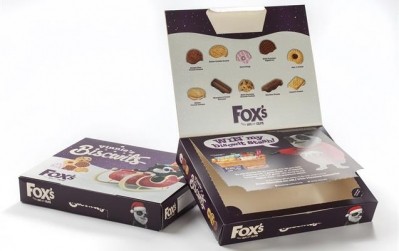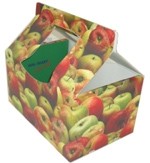Industry Voices: Guest Article
Not wanting to see the cookie crumble: The other side of the lightweighting frenzy

Reducing the amount of packaging consumed across all sectors can bring significant environmental, supply chain and financial benefits. However, the effect of light-weight packaging on the confectionary and business sector has been left unexamined.
While primary packaging is generating headlines, one of the less considered elements when it comes to reducing waste in the FMCG supply chain is tertiary, or transport, packaging i.e. the pallet or container on which the goods are shipped.
Lightweighting is testing the packaging union
Of course, supply chains have been engineered to ensure that journeys are as sustainable as possible. However, the light-weighting of sales packaging and the focus on shelf-ready packaging (SRP), although delivering benefits to both manufacturer and retailer, is ultimately testing the packaging ‘union’.
Take, for example, a pallet of biscuits where the union of packaging is all paper-based. The contents must be kept away from moisture and potential sources of contamination. There is also the potential of being easily damaged if exposed to pressure or the weight of other products. To that end, the boxes have historically been relatively sturdy, while the secondary packaging has been designed to prevent crushing and moisture ingress.
The move, in recent years, to ensure that the package’s overall weight is reduced means that greater stress is put onto transport packaging to ensure that the biscuits arrive in-store intact. This is where the humble pallet and its shrink wrap partner come into the equation.
With less packaging being used, that level of protection has been reduced and, as a result, manufacturers are starting to experience the outcome of product arriving in-store with minor packaging damage or even moisture ingress. As ever, there is a business balancing act to be done here, ensuring that both the integrity of the packaging and the risk of potential wastage are considered.
Cost savings may be deceptive
While primary packaging costs may be reduced through light-weighting innovations, the overall cost of shipping the biscuits could go up. It is important to realise that you can only go so far in limiting packaging before the product is exposed to the elements. If the sole protection for a product comes from the pallet and its shrink-wrap then, what was a simple element, ceases to be so.
It is up to all parties within the industry to work together to ensure that all elements of primary, secondary and tertiary packaging are optimised so that the goods reach store in the best possible condition and with minimum cost and environmental impact.
LPR (La Palette Rouge) is a division of Euro Pool System. It specializes in pallet-pooling for suppliers and retailers in the fast moving consumer goods (FMCG) sector throughout Europe.







